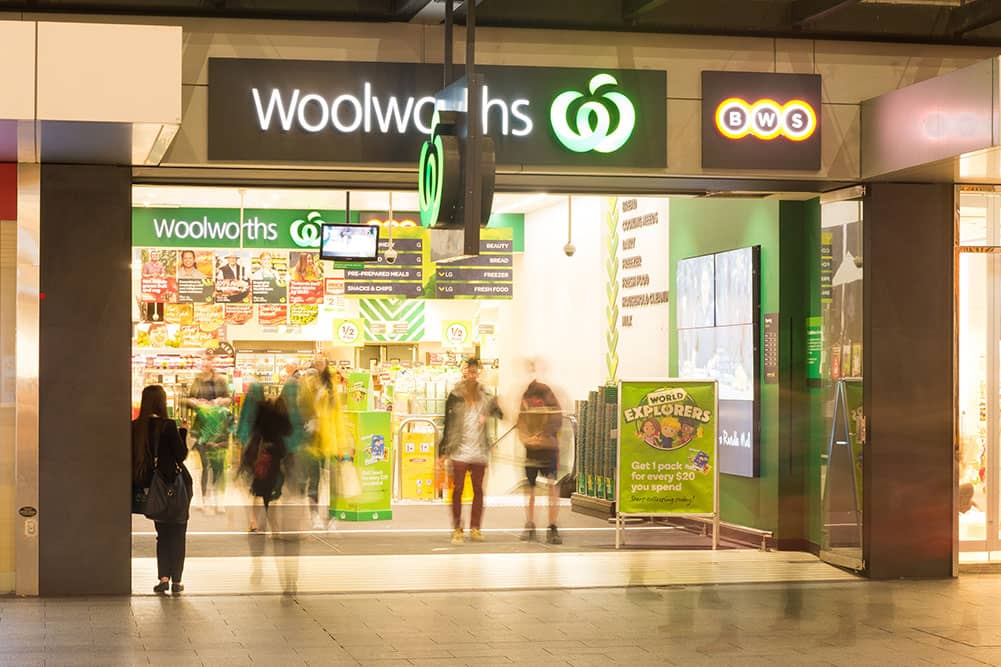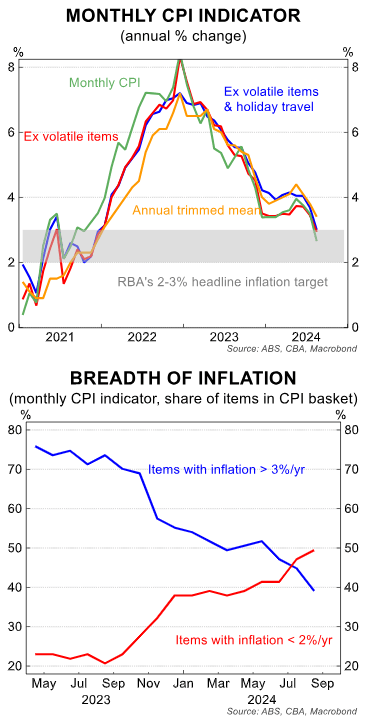
Image © Adobe Images
Australia's monthly rate of inflation has finally fallen into the Reserve Bank of Australia's target band, in an early signal that victory in the fight against rising prices is at hand.
However, lenders at some of Australia's biggest banks warn that the odds of an interest rate cut happening anytime soon are still remote.
"We doubt today's number will materially impact the RBA's thinking," says Catherine Birch, Senior Economist at ANZ.
The monthly CPI indicator fell to 2.7% year-on-year in August from 3.5% in July said the ABS, putting it within the RBA's 2-3% target band.
Monthly trimmed mean inflation - which is a measure of 'core' inflation that the RBA closely watches - was nevertheless still outside of this band, at 3.4%, down from 3.8% in July.
In addition, services inflation remains sticky at 4.2% y/y. When favourable base effects washout of the data (for instance a slump in electricity prices), core and services inflation risk pulling headline inflation higher again.
The data was released a day after the RBA said it expects the slow progress in bringing down underlying disinflation (core and services inflation) to continue through the third quarter.
The Q3 CPI will be released on 31 October and will be instrumental in the outcome of the next RBA Board meeting on 4-5 November. We continue to expect the RBA to hold the cash rate at 4.35% until the first 25bp cut in February next year," says Birch.
Pat Bustamante, a senior economist at Westpac, says the fall in electricity prices stole the show in the August data after registering a slide of 17.6% y/y. "Commonwealth Energy Bill Relief Fund rebates and state government rebates in Queensland, Western Australia and Tasmania combined to deliver this historic fall," he explains.
Rebates and government interventions tend to flatter headline figures of inflation, and once they fall out of the data cycle there is a risk that headline inflation returns higher.
"The bulk of the impact will be temporary," says Bustamante, acknowledging the electricity price will nevertheless help tame inflation expectations.
Westpac's view is that these monthly figures won't shift the thinking at the RBA. "Growth in housing costs, particularly new dwellings and rents, remain elevated and are a clear risk going forward," says Bustamante.
Economists at Commonwealth Bank of Australia say these data confirm a trend of disinflation continues, forecasting that the all-important third-quarter trimmed mean inflation rate will slide to 0.7% quarter-on-quarter.
"Such an outcome would represent an undershoot relative to the RBA’s forecast," says Stephen Wu, Senior Economist at Commonwealth Bank.
Given constructive disinflation trends and risks of rising unemployment, the lender thinks the RBA will cut interest rates before the end of the year. It anticipates 125 basis points of easing by the end of 2025, taking the base rate to 3.10%.

